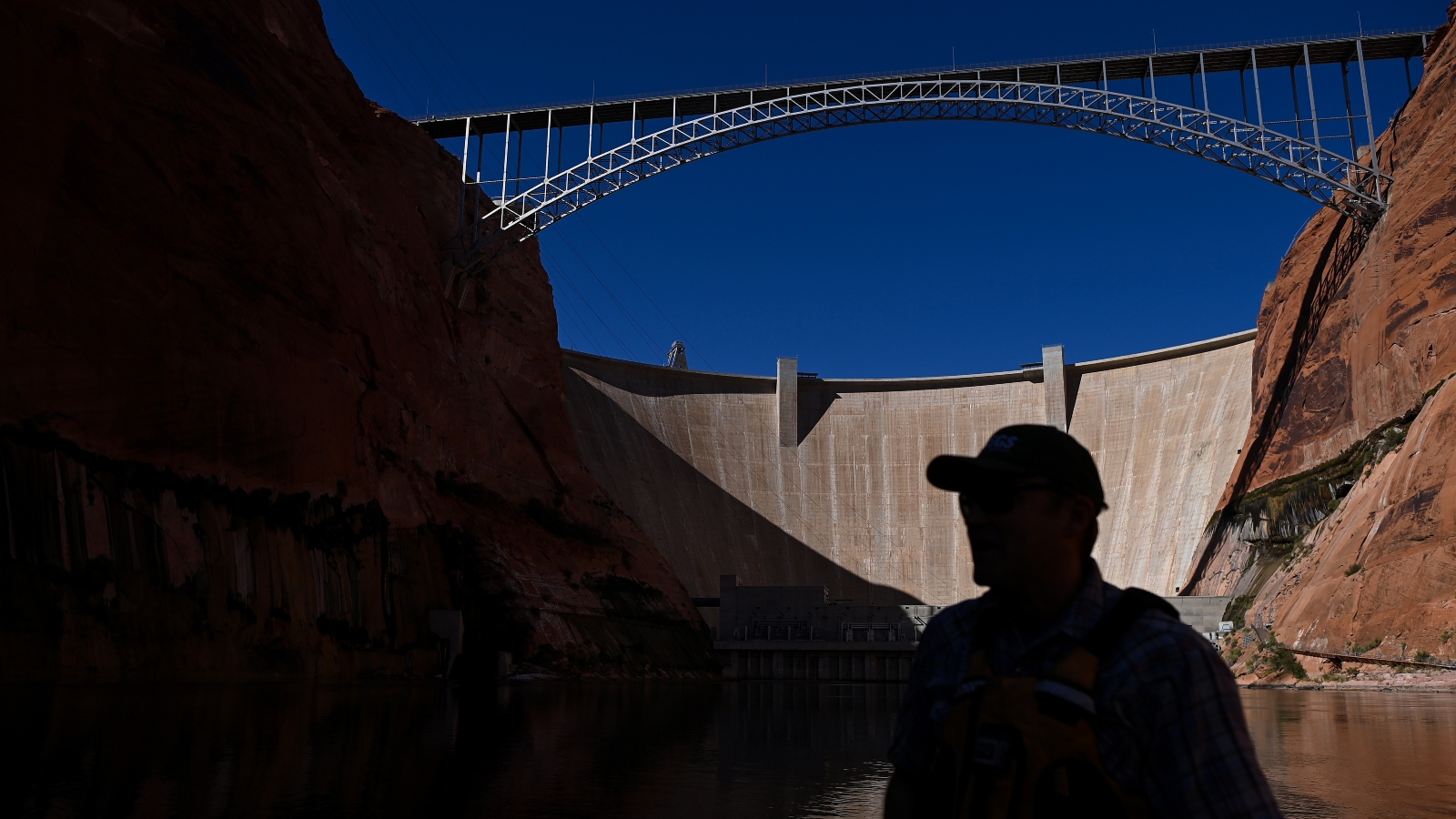Almost half of all the water that flows through the Colorado River each year is consumed by just two states: Arizona and California. Over the past year, as the Biden administration has scrambled to respond to a decades-long drought that has sapped the river, these two states have known a reckoning is coming. In order to stabilize the river, both of them will have to use less water.
At a press conference overlooking the Hoover Dam on Tuesday, the administration unveiled two plans to achieve those cuts, promising to reach a final conclusion by August. One plan would divide future cuts equally between Arizona and California, a potential violation of California’s stronger legal rights to the river. The other plan would recognize the Golden State’s seniority and reduce Arizona’s water allocation by more than half its current size during the driest years.
Both scenarios would be unprecedented in scale and severity, requiring at least some big reductions from both states as well as neighboring Nevada. The mandatory cuts would force farmers in these states to take land out of service and would raise water prices in cities and suburbs. They might also hinder industries such as mining and semiconductor fabrication.
In Arizona’s case, the risks are existential. The pro-California plan would all but dry up the federal canal that moves water to Phoenix and Tucson, eliminating a primary water supply for millions of people in those areas. Under that plan, Arizona’s labor market would lose around half a billion dollars in wages thanks to job loss in agriculture and other industries, and the state would also lose millions in tax revenue. Meanwhile, in the plan that spreads cuts evenly between the states, California’s economy would lose around $170 million as major vegetable and alfalfa farmers in the state’s Imperial Valley planted fewer crops.
Tommy Beaudreau, the deputy secretary of the U.S. Department of the Interior, hinted during the press conference that the pro-California plan — the plan that most fully complies with legal precedent for dividing up the river — was not likely to prevail.
“I don’t know that I’ve ever heard anyone advocate straight priority,” he said. “But it’s important for everyone to see what that would look like.” The administration can still consider options beyond the two plans it published Tuesday.
The government’s aim in drafting these new cuts is to prevent the collapse of the river’s two main reservoirs, Lake Powell and Lake Mead, which have shriveled during the recent climate-change-fueled drought. If the water level in these man-made lakes falls much lower, their dams will stop producing electricity. In the worst-case scenarios, water would no longer be able to move through the dams at all, causing a humanitarian crisis across the Southwest.
The river states began planning for severe drought more than 15 years ago, agreeing to trim water usage little by little as Powell and Mead emptied. But the two reservoirs have fallen much farther and faster than anticipated, making previous cut agreements obsolete and forcing states into emergency negotiations.
The negotiations began last June when a senior administration official ordered the seven states to cut their water consumption by between 2 and 4 million acre-feet, or as much as a third of total usage. After the states failed to reach an agreement on new cuts, the administration threatened to impose its own cuts.
That threat led six states to endorse a plan that would see California, Nevada, and Arizona all lose more than a quarter of their Colorado River water during the driest years. California alone objected to that plan, arguing that the law requires Arizona to shoulder the burden of the shortage, and proposed a set of cuts that was more forgiving to the Golden State. The two plans that federal officials unveiled on Tuesday largely reflect those two blueprints.
In the months since the states drafted those plans, a massive amount of snow has fallen in the mountains that feed the river, brightening the outlook for Lakes Powell and Mead. Once that snow melts, water levels in the two reservoirs will likely rise, taking the worst-case scenarios off the table. But even after a wet winter, the structural deficit remains.
“We’re thankful for this winter snow and rain,” Beaudreau said. “But everyone who lives and works in the basin knows that one good year will not save us from more than two decades of drought.”
Responding to that drought will require the federal government to make a painful choice between two plans that would both inflict serious economic harm on the Southwest. Beaudreau tried to strike a positive note, though, saying the crisis had brought about unprecedented collaboration between the states.
“Some of the commentary has depicted an us-versus-them dynamic in the basin,” he said. “I don’t see that at all. I see commitment, collaboration, and problem solving.”
Whether or not that spirit of collaboration can survive the implementation of historic water cuts remains to be seen.




